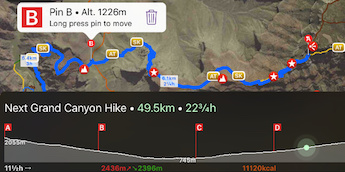Sipsey Wilderness
24 Trails
10 POIs
1 Peak
Description
The Sipsey Wilderness lies within Bankhead National Forest around the Sipsey Fork of the Black Warrior River in northwestern Alabama, United States. Designated in 1975 and expanded in 1988, the 24,922-acre (10,086 ha) Sipsey is the largest and most frequently visited Wilderness area in Alabama and contains dozens of waterfalls. It was also the first designated wilderness area east of the Mississippi River. The wilderness consists of the low plateau of Brindlee Mountain which is dissected into a rough landscape by several creeks and rivers. Due to the layers of limestone and sandstone that make up the area, waterfalls are very common in the wilderness. This feature has earned the wilderness the nickname "Land of 1000 Waterfalls." The wilderness is in the Appalachian mixed mesophytic forests ecoregion. Much of the wilderness was once logged, but new growth forests have now taken hold in the logged areas. Some old-growth forests can also be found in the wilderness. The most significant are about 260 acres (110 ha) along Bee Branch Gorge and Buck Rough Canyon, which include old Eastern Hemlock, American Beech, Sweet Birch, White Oak, and Tulip Poplar.
Trails in the Hikepack map
- Arnold Motorway
- Borden Creek Wild Hiking Trail
- Braziel Creek Trail
- Braziel Creek Trail / Lookout Wild HikingTrail
- Bunyan Hill Wild Hiking Trail (204)
- Bunyan Hill Wild Horse/Wagon Trail (224)
- County Road 1
- County Road 8
- East Bee Branch Canyon Trail
- Gum Pond Wild Horse/Wagon Trail
- Lookout Wild Hiking Trail
- Mitchell Ridge Trail
- Northwest Wild Horse/Wagon Trail
- Randolph Wild Hiking Trail (202)
- Rippey Wild Hiking Trail (201)
- Sipsey Wild Hiking Trail (209)
- Thompson Creek
- Thompson Creek Wild Hiking Trail (206)
- Trail 209 Sipsey River Trail
Attractions in the Hikepack map
- Needles Eye
Copyright
The PDF and JPG maps are released by Hikepack under the Creative Commons license Attribution-NonCommercial-NoDerivatives 4.0 International (CC BY-NC-ND 4.0)
https://creativecommons.org/licenses/by-nc-nd/4.0/.
Contains data ©OpenStreetMap contributors (https://www.openstreetmap.org/copyright) under the Open Database License (https://opendatacommons.org/licenses/odbl/). Topographic map based on elevation data from the U.S. Geological Survey. Aerial imagery available from the U.S. Geological Survey. Description text is available under the Creative Commons Attribution-ShareAlike 3.0 Unported License from Wikipedia (https://en.wikipedia.org/wiki/Wikipedia:Text_of_Creative_Commons_Attribution-ShareAlike_3.0_Unported_License). Cover image ©Fredlyfish4 https://commons.wikimedia.org/wiki/File:Sipsey_Wilderness_2016_6.jpg CC BY-SA 4.0 (https://creativecommons.org/licenses/by-sa/4.0/).



